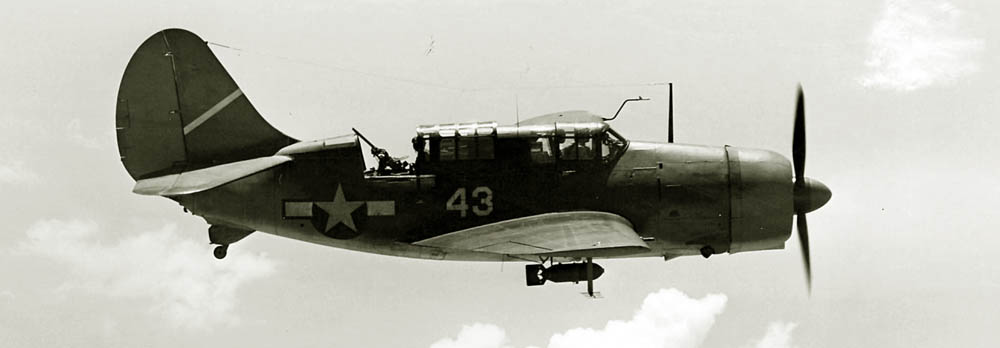
Aviation of World War II


 |
Aviation of World War II |


|
|
Soviet Union | Lend - Lease | Facts | Forum | Germany | Japan | R A F | U S A A F | Other | Photos |
|
|
SB2C-1 "Helldiver"Shipborne Reconnaissance BomberCurtiss
Subsequently, the production of SB2C has evolved in many variants, listed below. Only the originally ordered 200 machines corresponded to the SB2C-1 model, all of them remained in the USA for training. SB2C-1A. which appeared in 1943, was the land A-25A - after the transfer to the United States Marine Corps. Many of the vehicles involved in the fighting were still painted olive brown. The SB2C-1C contained several weapon enhancements, including the ability to remove bomb bay doors and carry a torpedo on an outer truss, but this was rarely used in practice. The main change to the SB2C-1C is the replacement of the four machine guns in the wing with two 20mm cannons, each with 400 rounds loaded from the top of the wing. Next to the ammunition were additional fuel tanks with a capacity of 170 liters each. The fully loaded SB2C-1C (the first modification to take part in combat) was in many ways worse than the old SBD, which was much more pleasant and safer to fly. By this time, another 900 Helldiver aircraft had been ordered by the US Air Force under the designation A-25 Shrike (without landing gear for the aircraft carrier, with a pneumatic tail wheel and many other changes). Everyone worked around the clock to speed up the program, and finally the first SB2C-1 was completed in Port Columbus in June 1942; The US Navy did not miss to notice that 10 days earlier the much better TBF "Avenger" of the firm "Grumman" entered the battle, although it began to be designed almost two years later than the ill-fated SB2C. Urgent tests of the first six production vehicles showed that in many respects they were worse than the prototype. A large increase in mass (empty weight increased from 3230 to 4636 kg) without replacing the engine led to the fact that the testers of the Anacostia airbase characterized the aircraft as "extremely sluggish." But by this time the number of cars produced was growing rapidly, and in order to avoid political scandals, it was necessary to deliver at least a few copies. The VS-9 assault squadron of the US Navy began to be re-equipped with SB2C-1 in December 1942. In fact, political scandals went unnoticed (it was wartime); there were so many bad programs that the Truman National Defense Program Committee was formed to investigate what was going on. This committee issued devastating conclusions regarding SB2C and, among other things, managed to redirect the A-25 to other customers, although many vehicles carried the colors of the US Army for a while. Subsequently, the production of SB2C has evolved in many variants, listed below. Only the originally ordered 200 machines corresponded to the SB2C-1 model, all of them remained in the USA for training. SB2C-1A. which appeared in 1943, was the land A-25A - after the transfer to the United States Marine Corps. Many of the vehicles involved in the fighting were still painted olive brown. The SB2C-1C contained several weapon enhancements. 
|
|
|